Seychelles (August 2024)
In August 2024, we spent around 2.5 weeks in the wonderful Seychelles. This country consists of 155 islands in the western Indian Ocean north of Madagascar. The islands can be divided into the inner islands, which are mostly mountaineous and consist of granitic rocks, and the outer islands, which are rather flat and formed by coral reefs. We only visited the main granitic islands, which are easy to reach and have regular ferry connections. We spent our time with hiking in the islands' interior forests, enjoying the spectacular beaches, visiting some of the major sights, going for snorkeling trips, and doing birdwatching. Because the Seychelles are far removed from the African continent, the bird diversity is comparatively low. However, twelve endemic bird species can be found in the inner islands and we were lucky enough to observe all of them.
Mahé Island
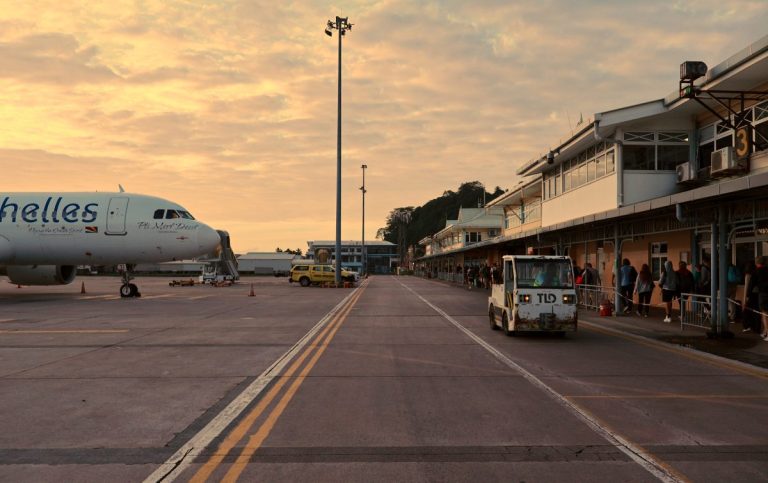
Day 1: Arrival at Beau Vallon
We arrived at the international airport of Mahé Island in the early morning and took a taxi to our guest house in Beau Vallon. Since our apartment was not ready yet, we went for a walk at the nearby beach. Within the first hour of our arrival, we had already seen several typical local birds, including three endemics: the Seychelles Sunbird, the Seychelles Blue-Pigeon, and the Seychelles Bulbul. These are among the most abundant birds on the islands and we saw them repeatedly in the coming days. Additional common species at Beau Vallon were Rock Pigeon, Malagasy Turtle-Dove, Zebra Dove, Common Myna, and Red Fody. All of these are naturalized birds, which were introduced to the islands by humans. In the distance, we also saw our first White-tailed Tropicbirds.
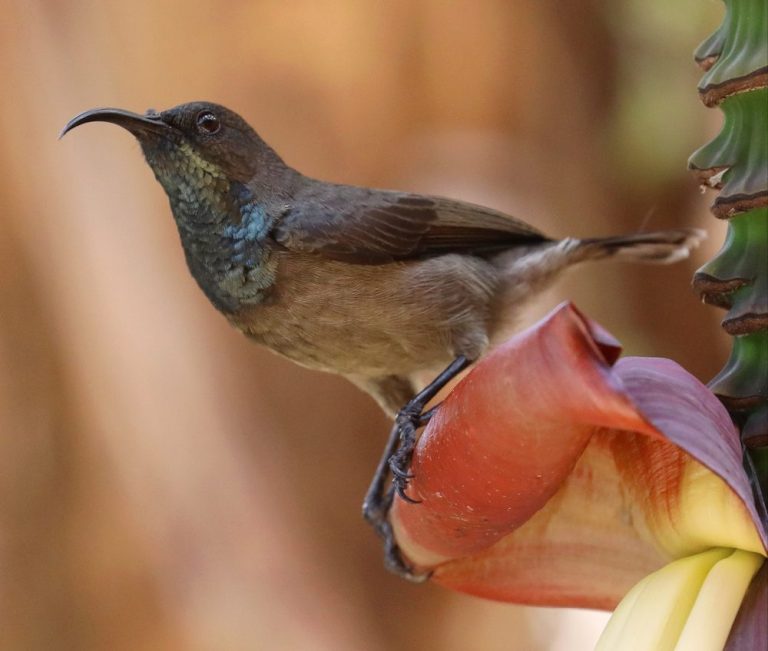



Day 2: Birding on Mahé Island
Early next morning, we met local bird guide Steve Agricole. Together, we drove to the center of Mahé Island to look for the endemic Seychelles White-Eye. Despite looking for quite some time, we only saw a pair of Seychelles Kestrels, some common birds, and many Seychelles Fruit Bats. We decided to try again in the afternoon and instead explored the lagoons south of Victoria, the nation's capital. We observed a number of common waders, herons, and egrets, but also found three Crab-Plovers and many beautiful fiddler crabs. Afterwards, we visited some hidden wetlands north of Victoria. Here, we saw several Yellow Bitterns, which are otherwise rare in the Seychelles. In addition to some other water birds, we observed many endemic Seychelles Swiftlets flying in the sky.
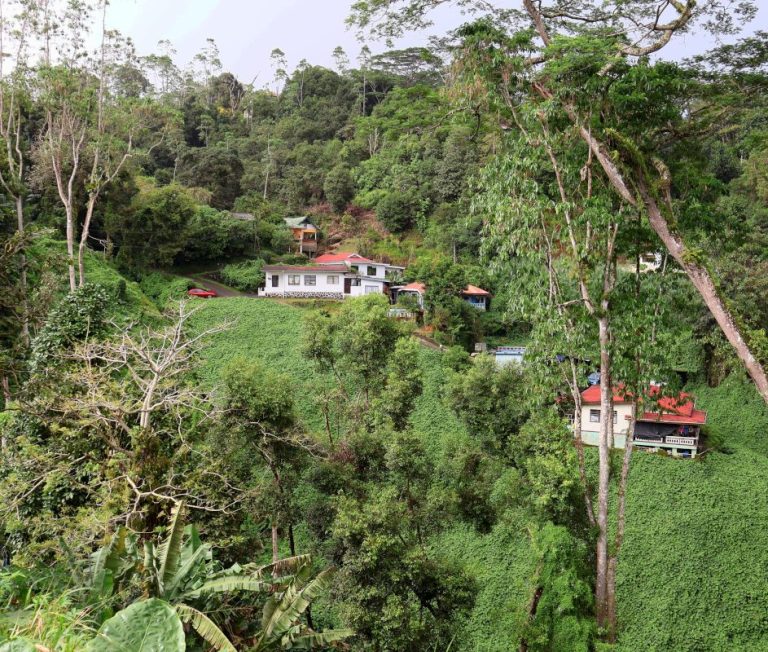



In the afternoon, we went back to the central part of Mahé Island and after about one hour, we were lucky enough to find a Seychelles White-Eye! This bird is particularly rare and very difficult to spot without knowing the right place to look. Consequently, we were really excited after our discovery! Nevertheless, we were not finished with our tour. After sunset, we went to the Morne Seychelles National Park to search for the Seychelles Scops-Owl. Luck was again with us and we found the owl after less than 30 minutes. We spent a few minutes with the owl, which was calling from a branch near the road, before going back to our guest house.




Day 3: Hiking the Anse Major Trail
The following day, we were a bit lazy in the morning and spent time sitting on the veranda of our guest house. A pair of Seychelles Sunbirds were regularly visiting the nearby banana plant and offered plenty of entertainment. In the afternoon, we hiked the Anse Major Trail. This trail continues from Beau Vallon towards the west and reaches a secluded beach. The scenery was beautiful, but the sun and heat was a lot. In the distance, we saw Lesser Noddies, White-tailed Tropicbirds, and a lonely Lesser Frigatebird.




Day 4: Exploring Victoria
Our fourth day on the Seychelles included a visit to its capital, Victoria. We took the public bus to the beautiful Arul Mihu Navasakthi Vinayagar Hindu Temple and walked to the nearby Sir Selwyn Selwyn-Clarke Market. Locals were selling vegetables and many species of fish with Western Cattle-Egrets trying to get some left-overs. We explored the city center a bit more and finally ended at the National Botanical Garden. After paying the overpriced entrance ticket, we spent a bit more than an hour at this public park and saw Seychelles Blue-Pigeon, Seychelles Swiftlet, Seychelles Kestrel, Seychelles Bulbul, and Seychelles Sunbird in addition to White-tailed Tropicbirds and our first White Terns.




Day 5: A trip around Mahé Island
We made good use of our tourist bus ticket and traveled all the way to Anse Royale in the southern part of Mahé Island. Here, we enjoyed the wide and lonely beach by reading books and snoozing. We continued our island tour in the afternoon with a bus to Port Launey Beach. We had a short walk in the mangrove area here and spotted a beautiful Seychelles Kestrel sitting on a wire next to the road. The last bus across Morne Seychelles National Park brought us back to Victoria and our guest house in Beau Vallon.
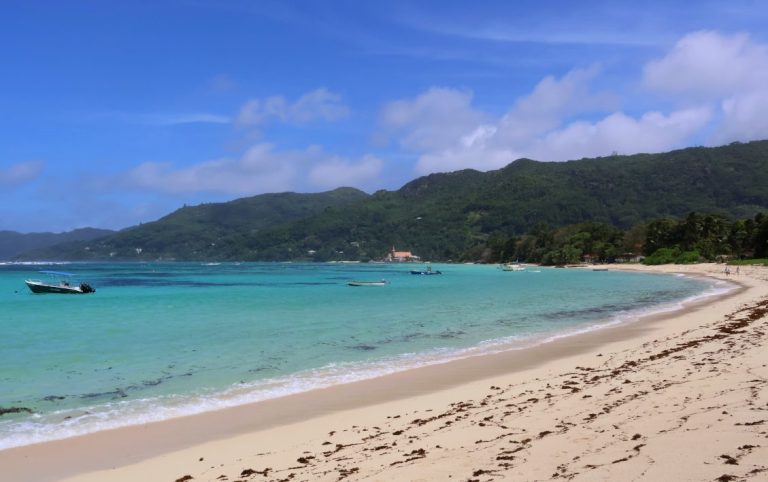



Day 6: Hiking the Copolia Trail
We spent most of the next day hiking the Copolia Trail in the mountains above Victoria. Fellow tourists in our guest house recommended this hiking trail to us and we really enjoyed the walk through the dense forest up to rocky cliffs with many endemic pitcher plants. The end of the trail offers great views across Victoria, the coastline, and the small islands of the Sainte Anne Marine National Park. Originally, we had planned to go for a snorkeling trip in this marine sanctuary, but the owner of our guest house suggested that snorkeling would be much better on La Digue. Birding along the Copolia Trail was not very exciting, except for a beautiful Seychelles Kestrel and White-tailed Tropicbirds flying through the forest. Nevertheless, the Seychelles offer also many other discoveries, including endemic snails, geckos, and skinks.




La Digue

Day 7: Arrival on La Digue
After breakfast, we took the ferry from Mahé Island to La Digue via Praslin. The waves were high and the trip was really bumpy, but offered the chance to see many ocean birds, including frigatebirds, Wedge-tailed Shearwater, Tropical Shearwater, Bridled Tern, and many noddies. We spent the afternoon in and around our guest house on La Digue. In the garden, we found several endemic La Digue Day Geckos. Many large Brown Land Crabs and Neosarmatium meinerti lived in burrows of a nearby canal, which was also regularly visited by a Common Sandpiper.




Day 8: Anse Source d'Argent
La Digue is the smallest of the main granitic islands of the Seychelles and the general mode of transport is the bicycle. After a lazy morning, we therefore cycled to the L'Union Estate. This former plantation offers a few historical sights as well as the world-famous Anse Source d'Argent, which is often described as one of the most beautiful beaches in the world. We walked around, went for a swim in the ocean, and enjoyed our time.




Day 9: Snorkeling around Coco Island
After spending already more than a week in the Seychelles, we finally organized a snorkeling tour to see something of the underwater world. Our tour guide took us to several spots around Coco Island, Petite Soeur, Grande Soeur, and Felicite. The ocean was a bit rough, but in general snorkeling was good. There were a number of colourful fishes and some corals growing on the granitic ocean floor. Even though we had a good time in the water, we thought that we had seen better coral reefs elsewhere (e.g., in Southeast Asia). Maybe the best event was a group of dolphins passing our boat. In the evening, we watched the spectacular sunset at the beach of La Passe and discovered many Horned Ghost Crabs.




Day 10: Birding the Veuve Nature Reserve
The Seychelles Paradise-Flycatcher is the main reason for birdwatchers to come to La Digue. During our stay on the island, we saw this spectacular bird a couple of times in different forest habitats, but the most reliable place to see it is certainly the small Veuve Nature Reserve. In addition to the paradise-flycatcher, it is also worth it to keep an eye open for the Seychelles Yellowbelly Mud Turtle, which inhabits some of the ponds in the sanctuary. We visited the reserve in the morning and again in the late afternoon.

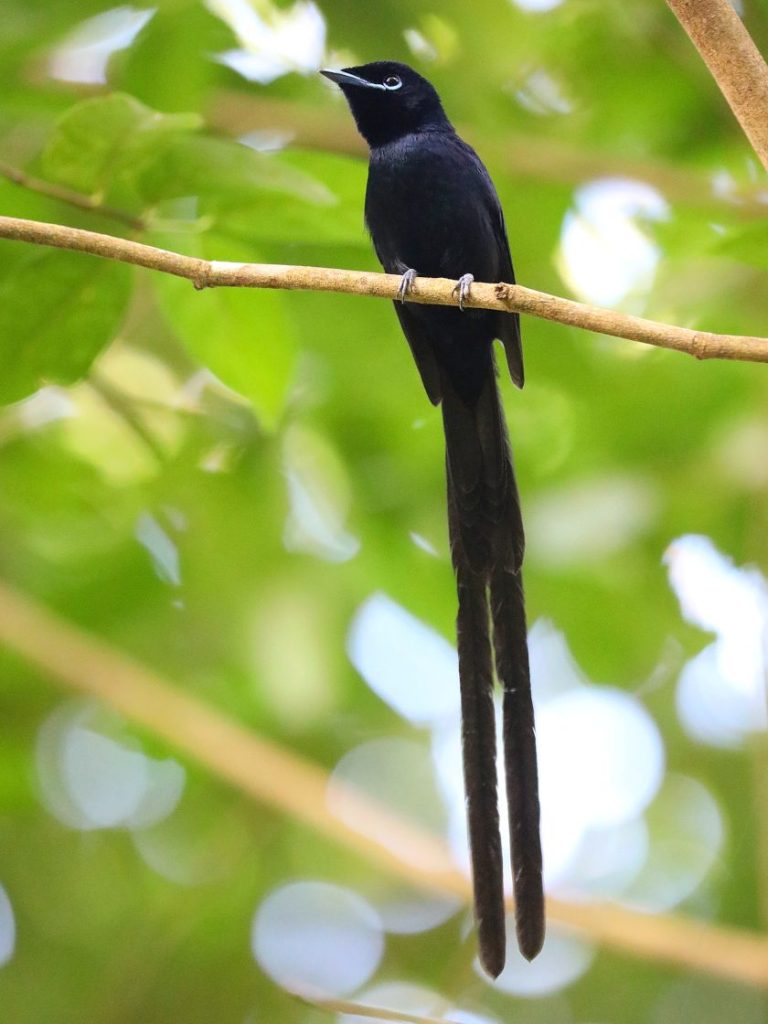


Day 11: Cycling around La Digue
On our last day on La Digue, we cycled across the forested interior of the island to Grand Anse in the southeast. Here we walked along the beach to neighboring Petite Anse. During this time of the year, the waves are quite rough here and swimming is not recommended. In the afternoon, we cycled around the northernmost tip of La Digue and along the east coast. We enjoyed the views and the general lack of tourists here.




Praslin
Day 12: Arrival on Praslin
After breakfast, we took the short ferry from La Digue to Praslin and were picked up by a taxi organized by our guest house in Anse Volbert. After settling in, we walked along the beach and did some simple shopping in the small supermarket in the town. Several Seychelles Kestrels were sitting on wires and roof tops.

Day 13: Exploring the Vallée de Mai Nature Reserve
One of the most famous sights of Praslin is the Vallée de Mai Nature Reserve, which protects the one of the last existing palm forests of the Seychelles with a large number of Sea Coconut ("coco de mer"). We went for a long walk through this beautiful UNESCO World Heritage Site.
Birdwatchers might be attracted to come to this sanctuary in order to spot the Seychelles Parrot, which breeds in dead palm trees and also feeds on the flowers of the coco de mer. However, due to the thickness of the vegetation, it is actually difficult to spot any birds and we only saw (and heard!) a few Seychelles Bulbuls during our visit. Instead, we enjoyed seeing several endemic snail species and an introduced Tailless Tenrec. After our hike, we spent a long time waiting for the public bus back to Anse Volbert, which seems to follow a rather erratic schedule. On the way home, we passed a Black-crowned Night-Heron standing in a trench along the road.




We spent the late afternoon at Anse Volbert reading and snoozing at the beach. Many common birds could be observed foraging in the grass, such as Red Fodies, Malagasy Turtle-Doves, Zebra Doves, and Common Mynas. White Terns were resting in trees.

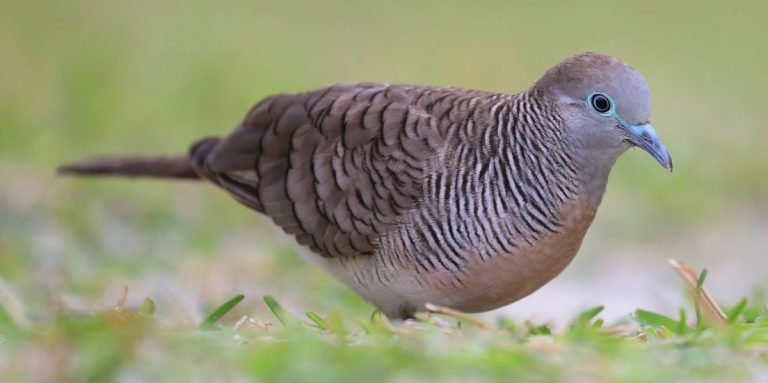

Day 14: Curieuse Island and St. Pierre
In the morning, we joined a group tour to the nature reserve at nearby Curieuse Island. Here, around 300 Aldabra Giant Tortoise can roam freely and tolerate the approaching tourists with a seemingly endless patience. A hiking trail through the island also passes a mangrove area with countless Giant Mangrove Whelks and various fiddler crabs. Endemic Seychelles Skinks ran across the trail, wading birds could be seen along the coastline, and several points enabled fantastic views of the tropical scenery. We reached Anse St. José after around one hour of walking and spent some time swimming at the beach and walking in the coastal forest (with three Seychelles Paradise-Flycatchers).





After we spent some time at the beach, our tour guide took us to nearby St. Pierre. This rocky islet is a popular snorkeling spot. Due to the windy weather, the water was not very clear. The highlight was a beautiful White-spotted Eagle-Ray! Otherwise, the underwater world seemed a bit bleak to us with only few living corals. Above the water, Roseate Terns and Lesser Noddies used the cliffs of St. Pierre to rest. We returned to Anse Volbert around lunch time and spent the afternoon in the neighborhood looking for the Seychelles Parrot. However, we were not lucky an only spotted common birds.



Day 15: Birding on Cousin Island and Praslin
In the morning, we took a boat to Cousin Island together with our friend Steve Agricole. Cousin Island is a nature reserve protecting a number of endemic bird species as well as serving as a breeding site for several sea birds. Access to the island is well-managed and only possible in group tours. Nevertheless, Steve had been working on the island previously and has special permission to bring birdwatchers to the island individually. We walked through the island's forested interior to its highest peak with a truly spectacular view!




It was very easy to spot the three endemic bird species on Cousin Island, the Seychelles Fody, Seychelles Magpie-Robin, and Seychelles Warbler. Cousin Island is one of the very few places, where these highly endangered species can be found and observed. In addition, we saw several sea birds breeding on the island, including White Terns, Brown Noddies, White-tailed Tropicbirds, and Wedge-tailed Shearwaters. From the top of the island, we could also see Lesser and Greater Frigatebirds soaring high in the sky. Less prominent were several Wright's Mabuyas and Seychelles Bronze Geckos.








After our return to Praslin, we had a simple lunch and then went on the search for the last endemic bird of the granitic Seychelles, the Seychelles Parrot. We drove around the island quite a lot in the afternoon and checked several potential sites, before finally discovering a group of at least eight birds sitting in a large mango tree feeding on fruits. We spent around 30 minutes with the parrots before Steve had to catch his ferry and we returned to our guest house at Anse Volbert.
Mahé Island
Day 16: Return to Mahé Island
After a lazy morning at Anse Volbert, we took the afternoon ferry back to Mahé Island. This time, the sea was less rough and the transfer seemed a bit more comfortable. We again saw characteristic sea birds (terns, noddies, shearwaters). Upon arrival at Mahé Island, we drove to our guest house in Beau Vallon for our last night in the Seychelles. We took a walk at the beach and enjoyed the sunset.



Day 17: Departure
Our final day on the Seychelles was spent with packing and some last-minute souvenir shopping in Victoria. In the late afternoon, we had a good surprise by seeing a flock of Common Waxbills. We had kept our eyes open for these colourful (though invasive) birds before, but only found them on our last day! Our plane left Mahé Island in the late evening.
© All rights reserved.
Wir benötigen Ihre Zustimmung zum Laden der Übersetzungen
Wir nutzen einen Drittanbieter-Service, um den Inhalt der Website zu übersetzen, der möglicherweise Daten über Ihre Aktivitäten sammelt. Bitte überprüfen Sie die Details in der Datenschutzerklärung und akzeptieren Sie den Dienst, um die Übersetzungen zu sehen.